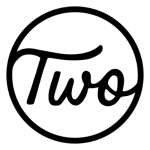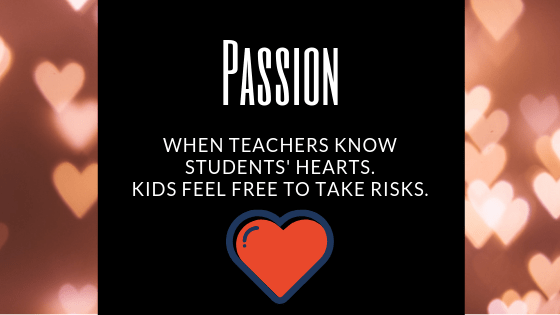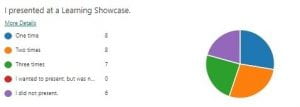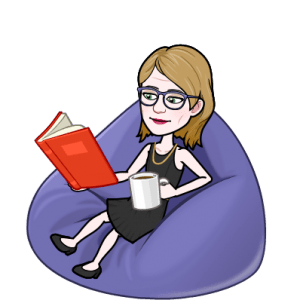Shared Leadership Stories

As a graduate student at Butler in EPPSP, we have been able to listen, learn, and ask questions of leaders in our summer phase. Since EPPSP is experiential you get the chance to engage in person and connect with others further along in their leadership journey. Today’s blog will highlight the presenters and my takeaway points.
 Dr. Deb Lecklider, Director of EPPSP at Butler University, @deblecklider
Dr. Deb Lecklider, Director of EPPSP at Butler University, @deblecklider
Q: How do you define success in your different leadership roles?
A: “The people around me are successful.”
When a leader is in charge, the true sign of a leader is the success of others. Are people growing and getting opportunities to grow. Dr. Lecklider allows others to share their expertise with her. She is an example of being a constant learner. It makes her a magnet for great people. She will continue to draw the right future leaders to the Butler EPPSP program.
“I have to be inspired,” Dr. Lecklider.
 Anila Dinn, Associate Vice President of Human Resources at Butler University
Anila Dinn, Associate Vice President of Human Resources at Butler University
Q: What is your philosophy on working with others?
A: “Do NO harm. Meet people where they are at. We judge people from our own measure. Try and understand where a people are coming from and meet them there.”
When you have to have a tough conversation with someone, you want to show the person that you are hoping to increase his/her success. You relate that the gap area can be improved, which makes a person an even more valuable asset. With Dinn, you are given respect and space to grow. However, this is not soft, you evaluate results and are metric driven in your leadership. You learn to “balance the needs of the institution and the needs of the people.”
Grateful to learn from Anila Din! “Schools are the field house for growth!” Thanks for joining us! #ButlerEPPSP @deblecklider pic.twitter.com/T51DGFAlbx
— Whitney Luther (@whitney_luther) May 16, 2019
 Tina Seymour, Educational Consultant, @SLSConsultingEd
Tina Seymour, Educational Consultant, @SLSConsultingEd
Q: What system “must haves” do you recommend?
A: “You must develop cultural systems and academic systems in a school. You have to be clear on what your lane is. Why is that a priority? Do you have data to support what you are doing?”
Principals and building leaders are responsible for making the systems in a building clear. The cultural systems allow students and staff to follow behavior guidelines and routines in the building. The instructional strategies allow teachers to know how to teach the content in effective, research based ways. With Seymour you learn, “Leadership is lots of strategy and emotional intelligence.”
Seymour’s Twitter Posts show her passion for education.
“Education is the most powerful weapon which you can use to change the world.” —Nelson Mandela #MondayMotivaton pic.twitter.com/KTG9TI40ar
— EL Magazine (@ELmagazine) February 25, 2019
 Lauren Franklin, Crispus Attucks High School Principal
Lauren Franklin, Crispus Attucks High School Principal
Q: How do you adjust to a new school culture?
A: “You block off three days when you just take a role. You allow teachers to meet with you for 3o minute sessions. You have them share what was going well in the building and what changes they would like to see. You listen. I didn’t do this in my first positions.”
Principals and assistant principals have to stand up for kids. Adults do not always keep kids at the center and desire decisions that may not be best for kids. When you work for the interest of kids, you may not always be popular with everyone. However, you are able to be true to yourself and your values. Franklin knows building leaders work as a team when she states, “I shouldn’t say ‘I’. I should say ‘we’. I did not do anything alone.”
“Children do not interrupt my work, children *are* my work” – Lauren Franklin, principal at Crispus Attucks HS #EPPSP @IPSSchools
— Evan Snyder (@MrSnyderClay) May 29, 2019
Thank you, Lauren Franklin for sharing your leadership journey. Excellent advice! #EPPSP pic.twitter.com/2bqUsvVZag
— Laura Christie (@MrsChristie21) May 29, 2019










 When it came time to make the decision to change the title from “Genius Hour” to “Passion Time,” it was easy. Internally, I had a cringe when it came to the word “genius.” I had to ponder why. Genius makes me think of fixed mindset. You are either born brilliant or you are not. Why project a bell curve or give a sense that only a few will be successful in a time period of the day or week at school?
When it came time to make the decision to change the title from “Genius Hour” to “Passion Time,” it was easy. Internally, I had a cringe when it came to the word “genius.” I had to ponder why. Genius makes me think of fixed mindset. You are either born brilliant or you are not. Why project a bell curve or give a sense that only a few will be successful in a time period of the day or week at school?
